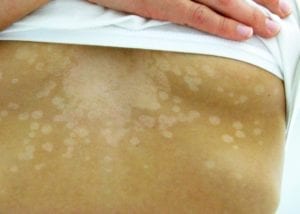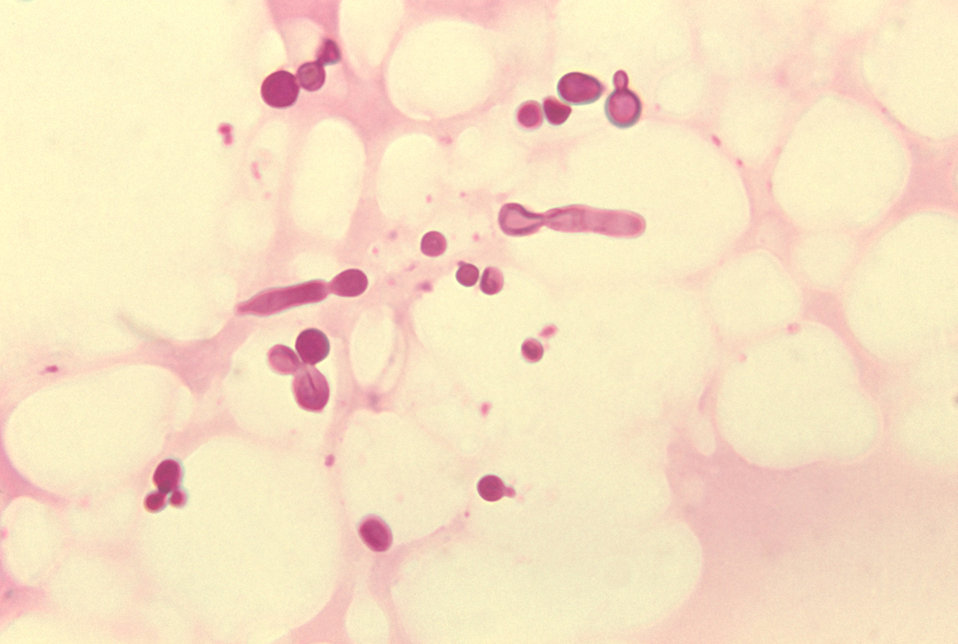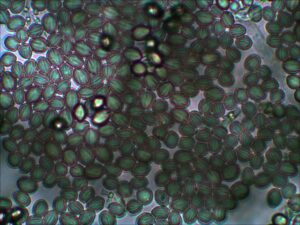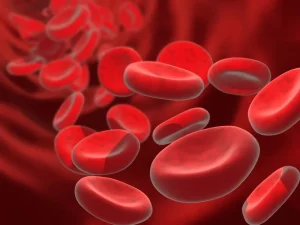Tinea
Firstly, tinea is a group of fungal infections, including ringworm, athlete’s foot, and jock itch, among others. These fungal pathogens are not usually life-threatening or even severe. However, they can be extremely uncomfortable.
Tinea infections spread through skin-to-skin contact. They typically occur when a child or adult touches an infected person or a contaminated surface. Tinea fungi thrive in damp and warm environments. They can spread on wet or moist surfaces, as with public showers or locker room floors. Sweating can also increase the chance of spreading or receiving this infection.
Tinea can spread between people and animals, though you can carry tinea infections without showing symptoms. Always use good hygiene and try not to share personal items.
How to Reduce Spreading
Tinea infections may reoccur. To limit exposure to tinea, and to reduce the chance of reinfection, follow proper hygiene. Avoid sharing materials like hairbrushes, combs, or hats. Keep the body clean and dry. Use sandals or foot protection in public spaces like swimming pools or public showers. Wear clean socks and underwear every day.
Do not use oily products. Wear loose clothes and protect all surfaces of the skin from the sun.
Signs/Symptoms
- Itchy/uncomfortable sores/lesions
- Circular, ring-shaped sores
- Slightly red with scaly border
- May grow as large as 1 inch in diameter and can occur in any number
 Tinea capitis
Tinea capitis
Firstly, tinea capitis is a fungus that causes ringworm of the scalp. It is prevalent among children, especially when sharing hairbrushes, combs, hair ties, etc. Ringworm of the scalp can cause itchiness and patches of round, raised lesions. Those who are allergic to the fungus may develop a kerion, which appears like a pus-filled sore on the scalp.
Use a selenium sulfide shampoo for scalp shedding and to reduce spreading. Apply the shampoo and leave on the scalp for 5-10 minutes before rinsing.
 Tinea corporis
Tinea corporis
Secondly, tinea corporis is a fungus that causes ringworm of the body. Wresters are commonly afflicted with this tinea infection. It is also referred to as tinea gladiatorum due to the nature of wrestlers often getting this infection.
 Tinea pedis
Tinea pedis
Next, tinea pedis is a fungus that causes athlete’s foot on feet and between the toes. The skin of the foot may become itchy and red, with cracking/flaking between the toes. It is most common in adolescents.
 Tinea cruris
Tinea cruris
Also, tinea cruris is a fungus that causes jock itch. A rash in the groin area, an area that is usually moist and warm, indicates a jock itch infection. It is common in those wearing athletic gear in the groin region.
 Tinea versicolor
Tinea versicolor
Finally, tinea versicolor, or pityriasis versicolor, is a fungus that causes a yeast-like skin infection. It can occur in many areas on the body. Tinea versicolor is common in tropical regions that are warm and moist. This infection prevents the skin from tanning. These spots can be very faint, and many may not know that they are infected. It is often shared among those with oily skin, as with teens and young adults. Tinea versicolor thrives in hot, humid weather, sweaty skin, oily skin, and a weak immune system. It may disappear in cold weather, then reappear when the weather warms again.
Treatment
Treat tinea infections topically with antifungal creams or drying powders. Creams and
powders are not useful for scalp infections. For these infections, take antifungal medication
orally. Take griseofulvin, the most common antifungal, for 4-6 weeks. Topical medications clotrimazole and ketoconazole are used to treat other forms of ringworm.
Be sure to cleanse and dry the area before applying any medication. It’s essential to follow directions carefully and use them for the entire length of time recommended. If you stop applying as soon as the infection disappears, it may still live in your system and may develop a resistance to the medication.
Finally, for questions or concerns, please respond to this blog post or contact us!







